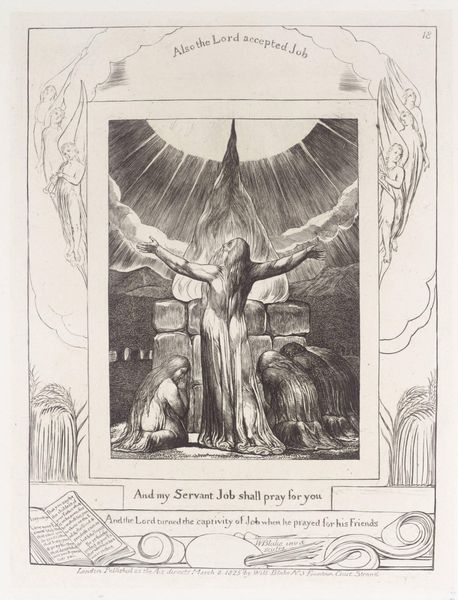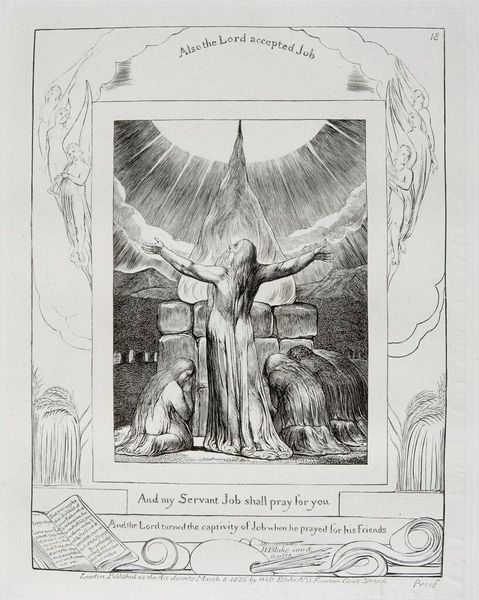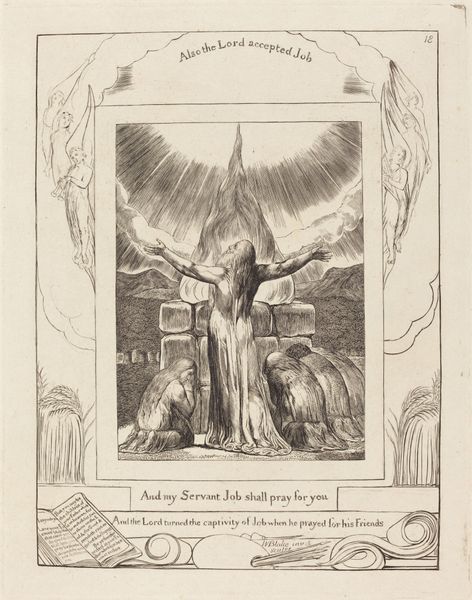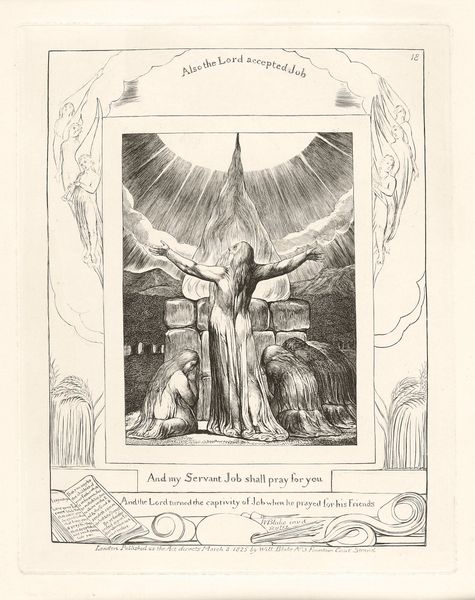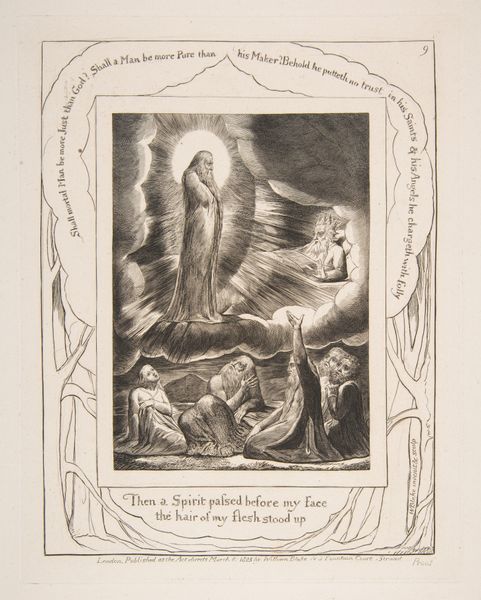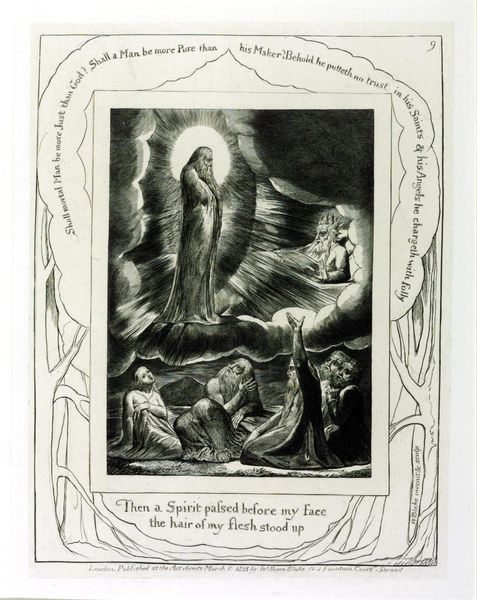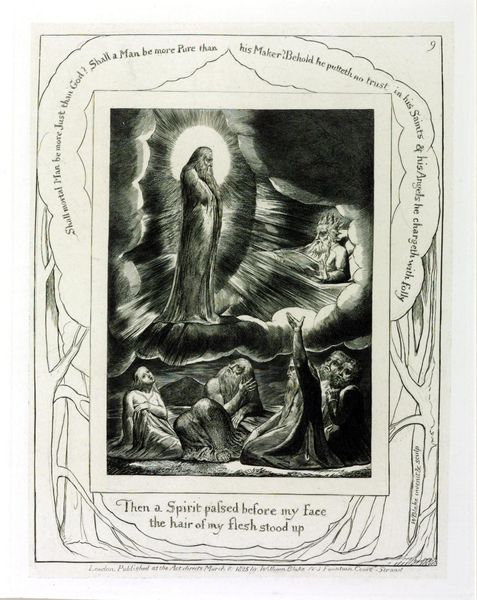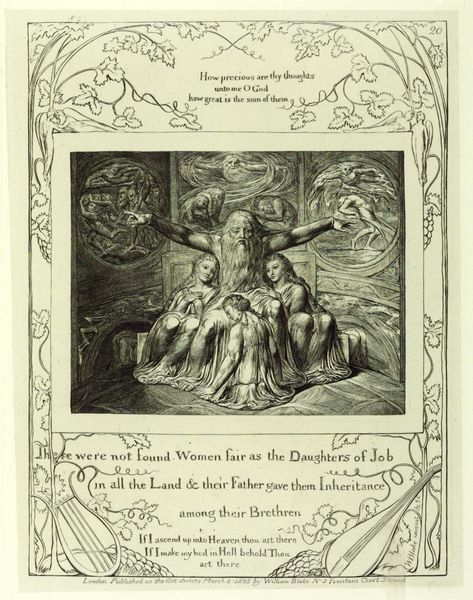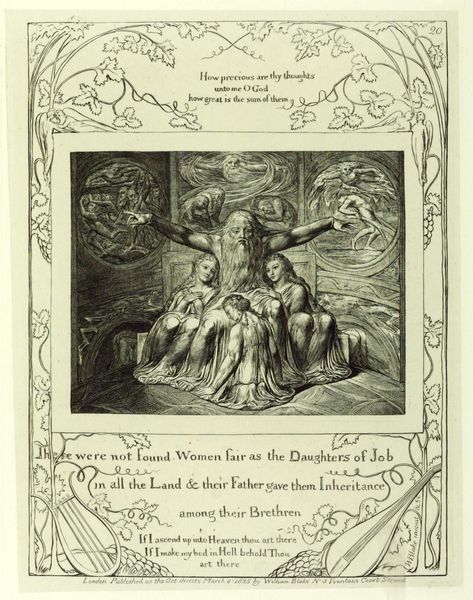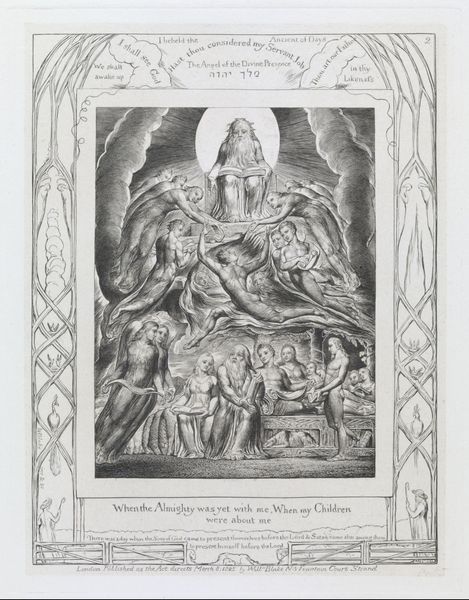
Dimensions: image: 198 x 150 mm
Copyright: NaN
Editor: So, this is William Blake's "Job's Sacrifice," an engraving. It feels incredibly dramatic, almost theatrical. What stands out to you in terms of the material production of this piece? Curator: Well, notice the emphasis on labor. The etching process itself, the meticulous work with acid and metal, speaks to a deliberate engagement with craft. Blake, as a printer, controlled the means of production, challenging the art establishment of his time. How does this materiality affect your reading of the image? Editor: I see your point. Knowing he controlled the printing impacts my reading of the image. Thank you.
Comments
Join the conversation
Join millions of artists and users on Artera today and experience the ultimate creative platform.
tate 8 months ago
⋮
This is plate 18 of the set of twenty-one engraved illustrations to the 'Book of Job'. They were commissioned by Blake's friend, the artist John Linnell (1792-1882) and Blake worked on them from 1823 to 1825. We know from Linnell that the plates for this series were 'cut with the graver entirely on copper without the aid of [etching acid]'. The effects of darkness and light achieved by this method, combined with the recurring energy of pure line, are always appropriate to the subject. In this sense of unity, the 'Job' series ranks among Blake's supreme achievements as a printmaker. The burin and the palette seen in the margin next to an open bible link the artist with Christ's work as a preacher. Gallery label, August 2004
